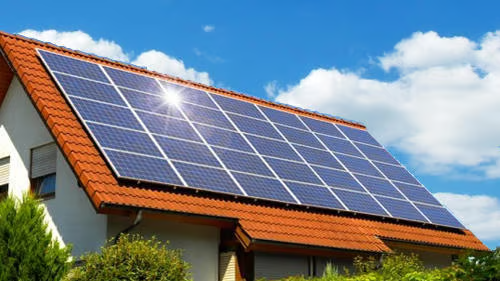India–US Trade Tensions Rise Over Steel and Auto Tariffs NMDC Limited reports a 38% drop in Q4 FY24 consolidated net profit RINL to Raise $23 Million Through Land Sales Amid Crisis

According to Pradip Kumar, chairman and managing director of the Indian Renewable Energy Development Agency (IREDA), India has to invest around ₹30 lakh crore between FY 2024-2030 to satisfy its Nationally Determined Contributions (NDC) commitments by 2030.
On February 14, 2024, The World Bank hosted an international webinar during which he delivered a speech honouring the publication of the most recent South Asia Development Update, titled "Towards Faster, Cleaner Growth." Das stated that investment is required in producing capacity for solar, electrolysers, wind and battery, transmission, green hydrogen, hydro and waste-to-energy sectors.
On the PM Surya Ghar Muft Bijli Yojana, the rooftop solar scheme launched by Prime Minister Narendra Modi on 13 February 2024, the CMD said that the project, backed by an investment of over ₹75,000 crore, aims to solarise one crore households by providing up to 300 units of free electricity every month.
“This initiative is poised to elevate the rooftop solar sector to unprecedented heights in the country. The scheme will provide substantial benefits and foster awareness about renewable energy among the people-at-large, contributing to India's ambitious goal of achieving Net-Zero emissions by 2070 and Energy Independence by 2047,” he added.
Das said that India's rise has been a role model for renewable energy development worldwide; several initiatives of the government, such as renewable purchase obligations, PM-KUSUM scheme, ‘must-run’ status for RE assets, PLI scheme for solar PV manufacturing, and the allowance of up to 100% FDI under the automatic route for renewable energy.
“As India aims to become the third-largest economy in the next three years and a developed country by 2047, there will be a significant energy demand to achieve energy security and energy independence,” he said.
About 90% of this demand is expected to be met through renewable sources. Until sufficient energy storage for renewable energy is achieved, thermal energy will also be developed alongside, Das added.
Also Read : Every partner needs to collaborate for India to become third-largest economy by FY28, says FM India's nuclear power capacity to surge threefold to 22,800 MW by 2031-32: Jitendra Singh